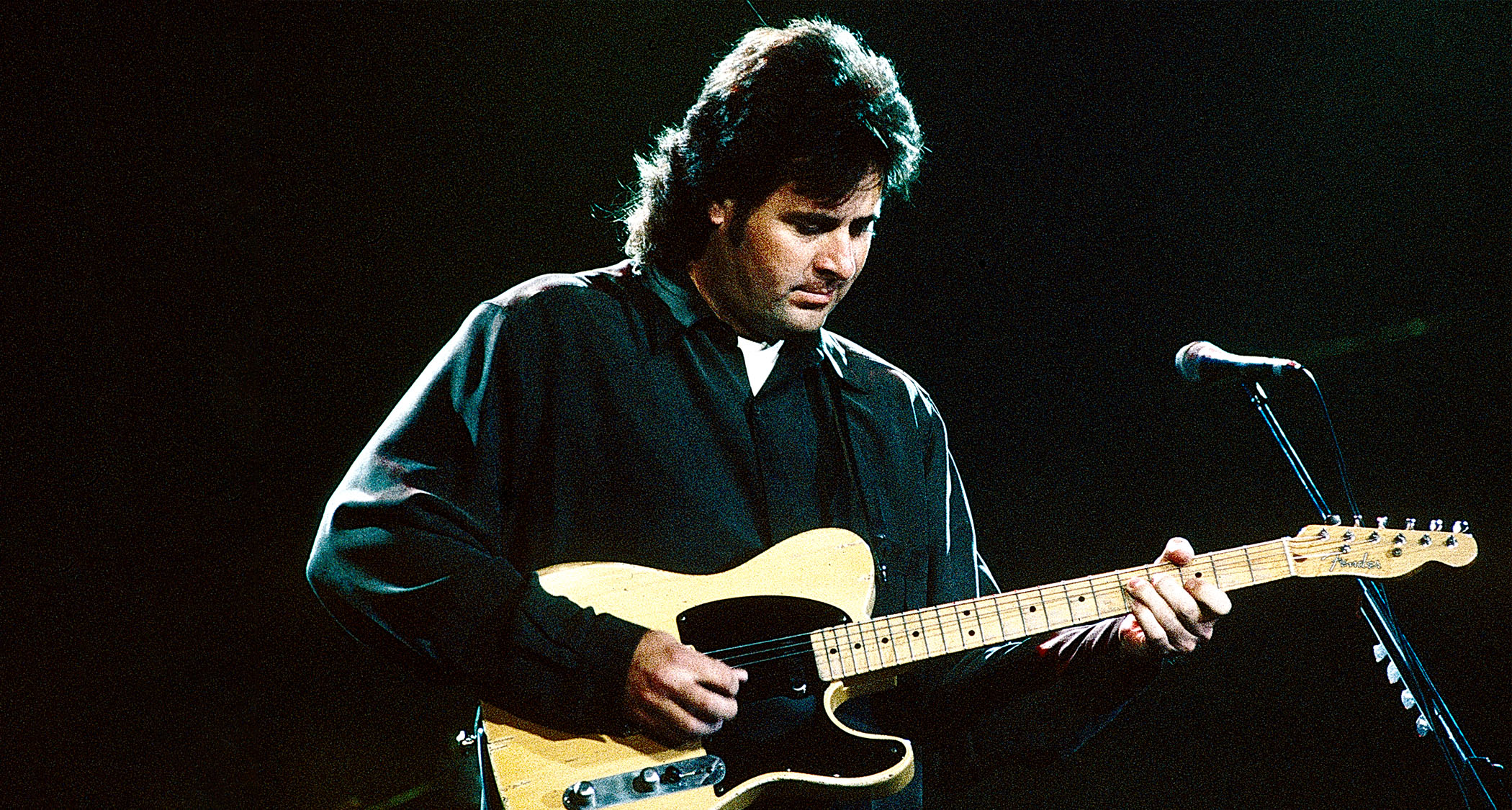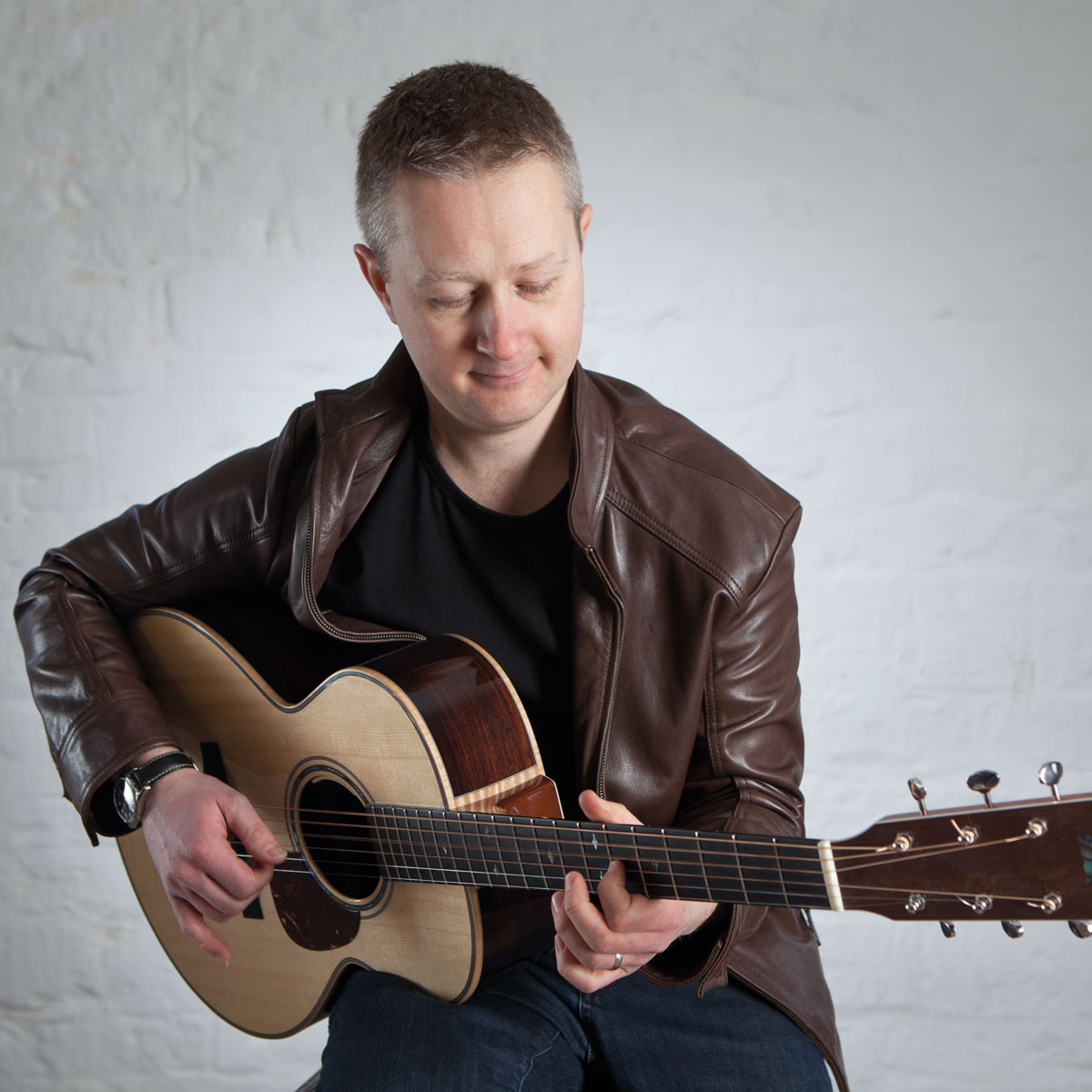Vince Gill and Brent Mason are two of country music's most respected guitarists – and their supreme hybrid picking abilities are key to their success
This is a smoking hot introduction to one of Nashville's most important skills

This is a country shuffle inspired by Nashville monsters Vince Gill and Brent Mason. There are plenty of country techniques to work on in this one, from unison lines to double-stop licks, country bends and hybrid picking.
If you are new to the style, it’s probably worth outlining just what some of these techniques are and how you go about playing them. First, unisons. These are very common in country and this is where you play a fretted note then follow it with its open-string counterpart, keeping both notes ringing as much as possible.
You’ll see this in the fifth bar where I start with a G on the fourth string, follow it with the open third string, then play the fourth string G again. This sounds very different from playing a note multiple times on the same string and hints at the ringing qualities of a pedal steel.
Double-stop licks are when you simultaneously fret two notes on adjacent or non-adjacent strings. Many of us have done this on Smoke on the Water, but in country, the aim is to move the double-stops around and create a melodic lick out of them.
You’ll see the first double-stop lick in the bars 9 and 10. When working on this technique, make sure both fingers are holding the double-stop in place evenly, as you’re aiming for both notes to sound with an even volume.
Hybrid picking means using a combination of pick and fingers, and sometimes it’s done for tonal benefit. You can hybrid pick double-stop licks, the pick taking care of the lower note and the second finger playing the note above. The technique comes into its own when two strings aren’t sitting next to one another.
Check out the lick that starts on bar 20, where you have to jump quickly from the fifth string to the third string. Play the first note with the pick then use the second finger on the third string and you’ll see how efficient this is, and how it avoids the much trickier approach of string skipping with the pick.
All the latest guitar news, interviews, lessons, reviews, deals and more, direct to your inbox!
Get the tone
Amp Settings: Gain 3, Bass 7, Middle 6, Treble 7, Reverb 2
If you have one, a Telecaster’s bridge pickup is hard to beat for this style of hot country. If not, any bridge single-coil pickup will do. Amp-wise, it’s typically Fender Deluxe Reverbs or Vox AC30/15 with a compressor pedal and slapback delay. I recorded this with my Custom Shop 1952 heavy relic Telecaster into a Vox handwired AC15 with the above effects liberally added.
Country guitar techniques solo
[Bars 1-19] There are plenty of places to practise country picking straight from the start. In bars 7-8 try some hybrid picking using the guitar pick for the 5th fret of the fourth string followed by the second and third picking-hand fingers plucking the double-stop at the start of bar 8. This gives you more definition on the third and second strings and also allows you to pluck the strings with greater attack for some lovely country ‘snap’.
[Bars 21-40] Another common way of using hybrid picking is to play non-adjacent strings and you can practise this from the end of bar 20 leading into bar 21. Use the pick for the fifth string and then the second finger on the picking hand to jump to the third string at the 3rd fret. Using this pick and fingers approach minimises the amount of work you need to do with the plectrum and in turn makes your picking more economical.
[Bars 41-61] In bar 41 you’ll find a famous country bend, the triple-stop bend which emulates the sound of the pedal steel. To execute this, use the fourth finger to partially barre the 15th fret of the second and first strings. Next, place the second finger (or indeed, third) at the 14th fret, third string, with the first finger on the fret behind it for re-enforcement.
Now bend the third string up a tone while striking the second and first strings. Make sure the fourth finger maintains an even pressure so all three strings ring together for the pedal steel effect (for authenticity, make the bend sound as accurate as possible).
- Stuart's new book Modern Country Guitar Jam Session is available now.
Stuart Ryan is best known for his acoustic guitar playing, from Celtic fingerpicking and traditional folk to modern percussive phrasing and fresh interpretations of popular pieces. He has released several solo albums, written pieces for UK examination boards and created nine tutorial books ranging from acoustic guitar arrangements to Americana styles.


